Abstract
The vertex Readiness Potential (RP) (Bereitschaftspotential) preceding self paced voluntary movements is reduced in duration and amplitude in patients with Parkinsonism. It cannot be used as an index for delayed initiation of movement. The negative potential is commonly replaced by a positive slow wave. In hemi-Parkinsonism, the abnormal RP is more apparent on moving the affected limb. The abnormal RP is related to the severity but not to the duration of Parkinsonism. Short-term fluctuations of akinesia and rigidity, spontaneous or caused by levodopa are associated with changes of RP duration and amplitude. The abnormality does not correlate with reaction or movement times. It is suggested that the Readiness Potential is a diffuse response of area 6 cortex (especially Supplementary Motor Area) evoked by pallido-thalamo-cortical afferents under dopaminergic control. It is not obligatory for pre-programming of voluntary movement. The authors postulate a dendritic potential of basket cells associated with a pallidal activated gate control of postural set.
Full text
PDF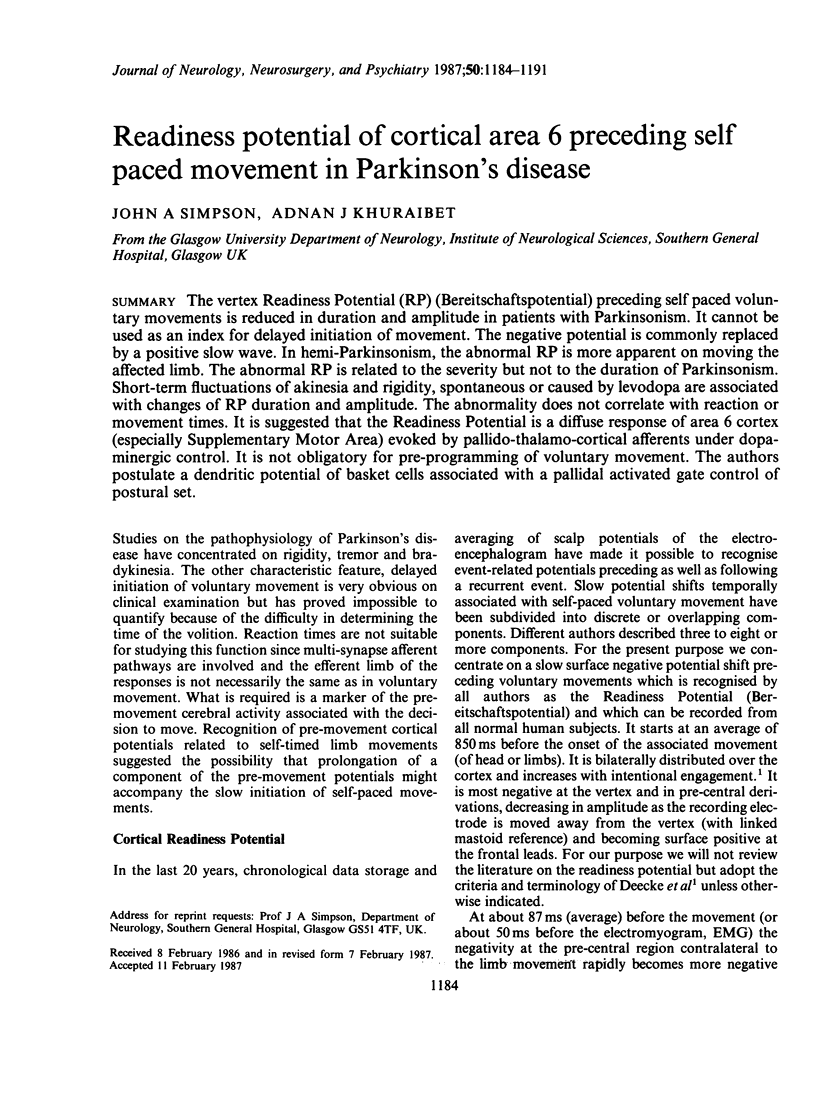
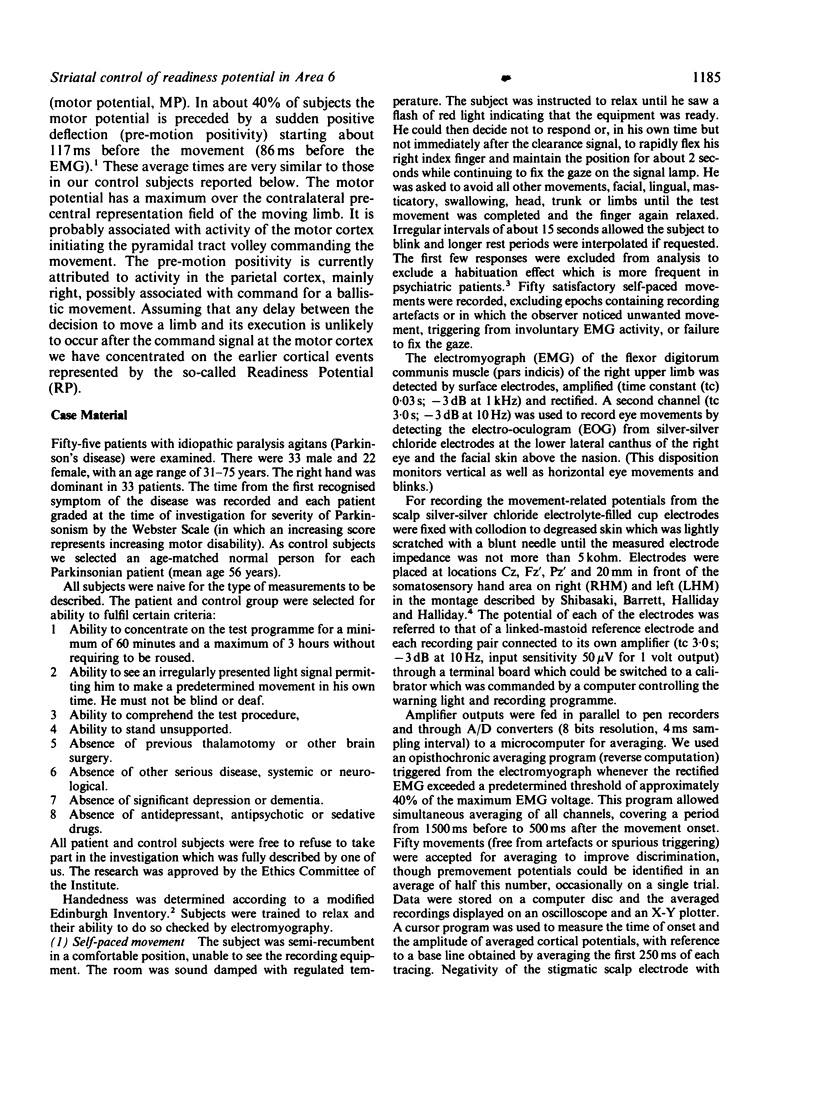
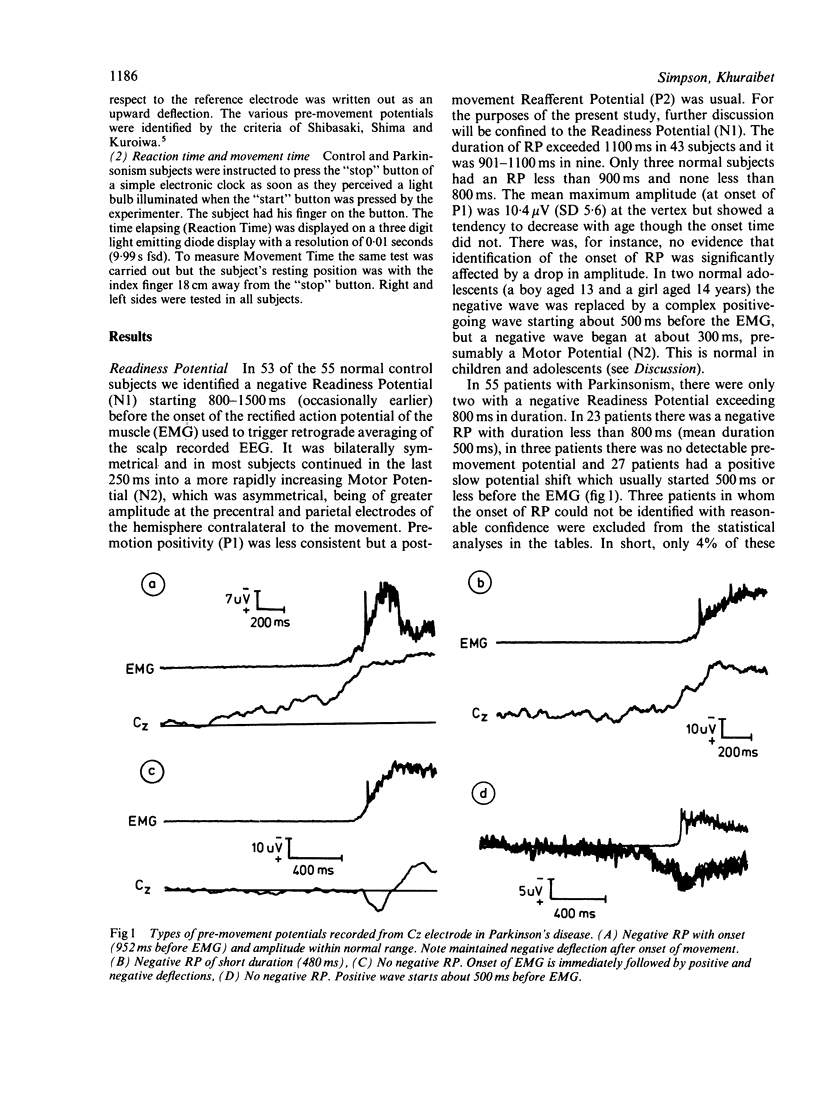
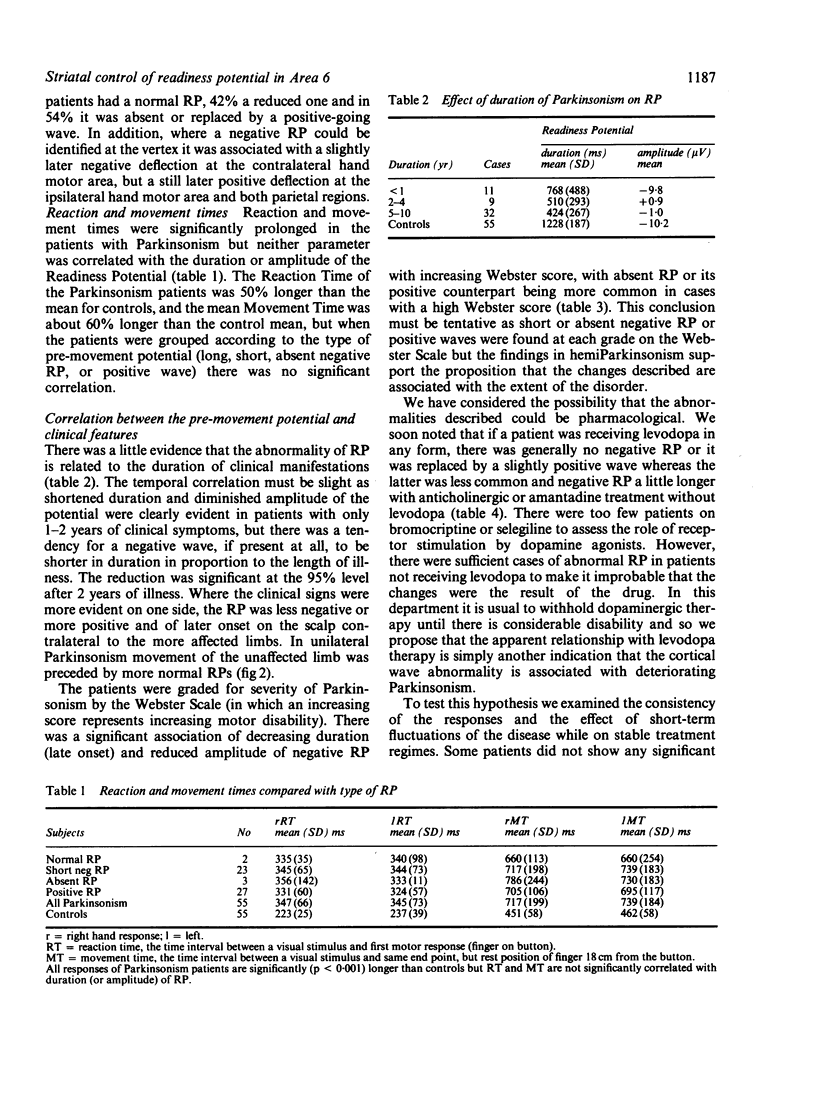
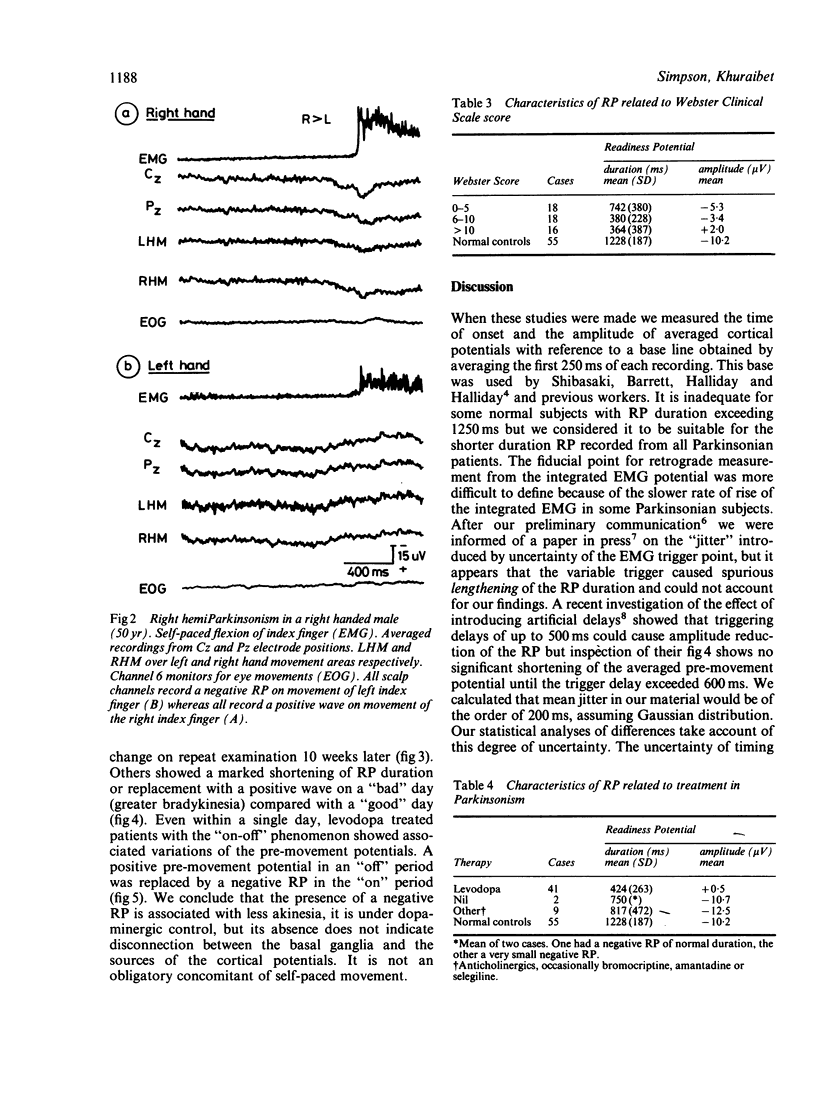
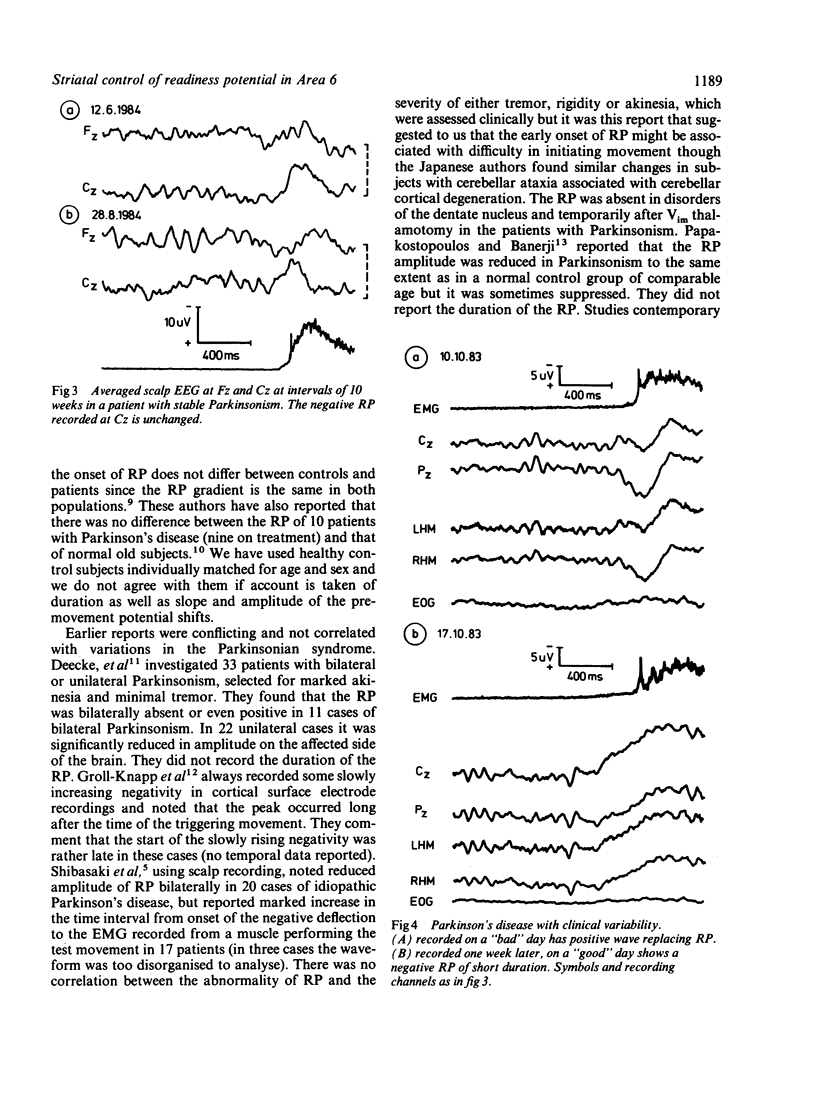
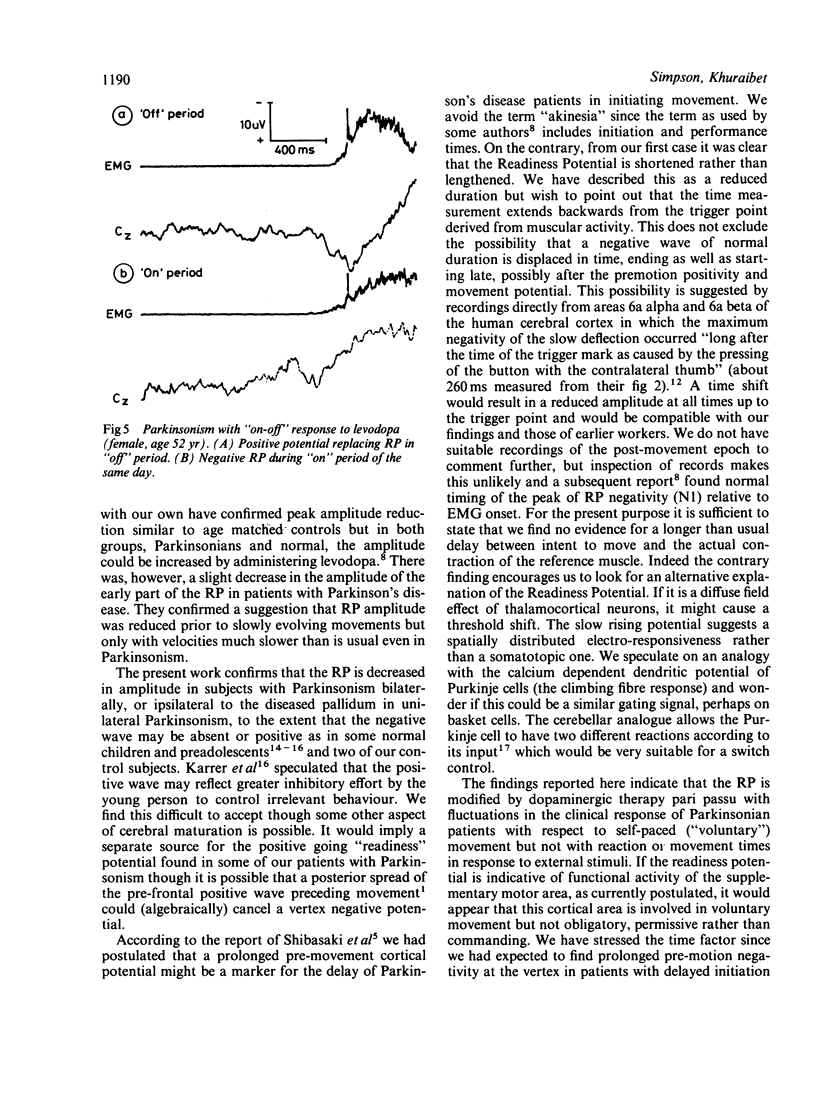
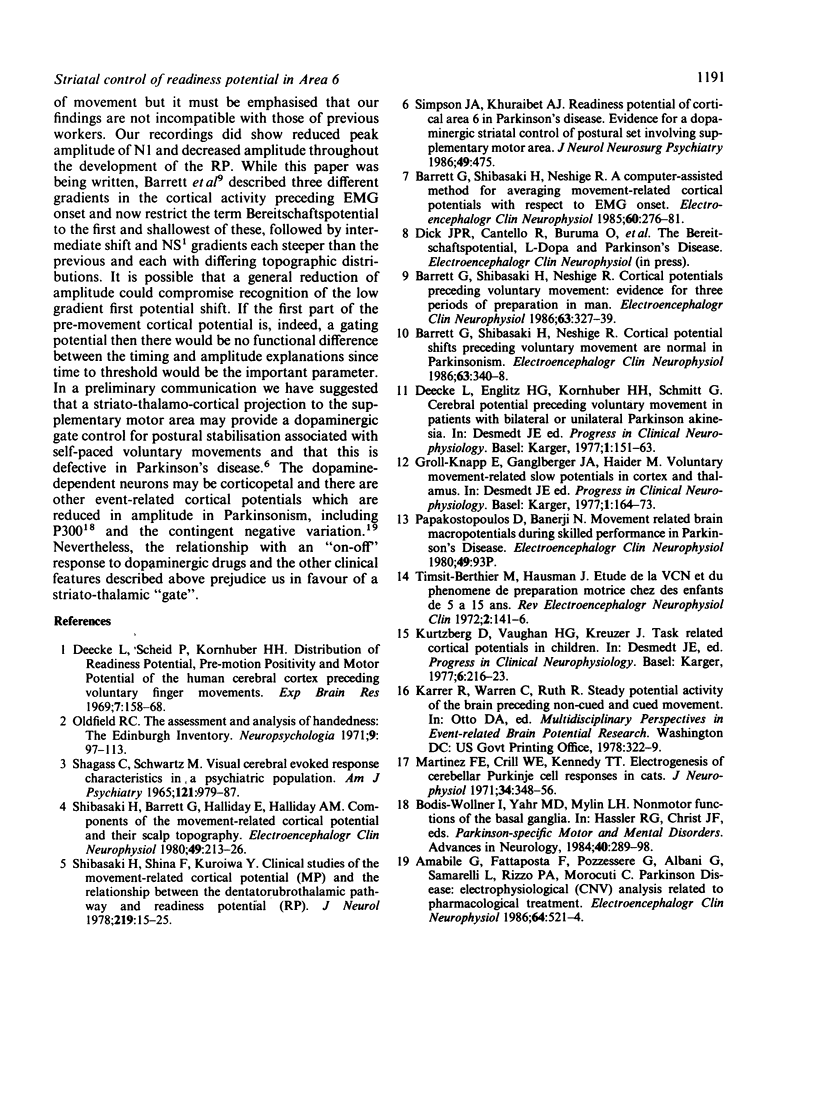
Selected References
These references are in PubMed. This may not be the complete list of references from this article.
- Amabile G., Fattapposta F., Pozzessere G., Albani G., Sanarelli L., Rizzo P. A., Morocutti C. Parkinson disease: electrophysiological (CNV) analysis related to pharmacological treatment. Electroencephalogr Clin Neurophysiol. 1986 Dec;64(6):521–524. doi: 10.1016/0013-4694(86)90189-6. [DOI] [PubMed] [Google Scholar]
- Barrett G., Shibasaki H., Neshige R. A computer-assisted method for averaging movement-related cortical potentials with respect to EMG onset. Electroencephalogr Clin Neurophysiol. 1985 Mar;60(3):276–281. doi: 10.1016/0013-4694(85)90042-2. [DOI] [PubMed] [Google Scholar]
- Barrett G., Shibasaki H., Neshige R. Cortical potential shifts preceding voluntary movement are normal in parkinsonism. Electroencephalogr Clin Neurophysiol. 1986 Apr;63(4):340–348. doi: 10.1016/0013-4694(86)90018-0. [DOI] [PubMed] [Google Scholar]
- Barrett G., Shibasaki H., Neshige R. Cortical potentials preceding voluntary movement: evidence for three periods of preparation in man. Electroencephalogr Clin Neurophysiol. 1986 Apr;63(4):327–339. doi: 10.1016/0013-4694(86)90017-9. [DOI] [PubMed] [Google Scholar]
- Bodis-Wollner I., Yahr M. D., Mylin L. H. Nonmotor functions of the basal ganglia. Adv Neurol. 1984;40:289–298. [PubMed] [Google Scholar]
- Bruneau N., Martineau J., Ragazzoni A., Roux S. Event-related slow potentials evoked during ankle jerk conditioning in wakefulness and NREM sleep. Electroencephalogr Clin Neurophysiol. 1980 Jul;49(1-2):93–101. doi: 10.1016/0013-4694(80)90355-7. [DOI] [PubMed] [Google Scholar]
- Deecke L., Scheid P., Kornhuber H. H. Distribution of readiness potential, pre-motion positivity, and motor potential of the human cerebral cortex preceding voluntary finger movements. Exp Brain Res. 1969;7(2):158–168. doi: 10.1007/BF00235441. [DOI] [PubMed] [Google Scholar]
- Martinez F. E., Crill W. E., Kennedy T. T. Electrogenesis of cerebellar Purkinje cell responses in cats. J Neurophysiol. 1971 May;34(3):348–356. doi: 10.1152/jn.1971.34.3.348. [DOI] [PubMed] [Google Scholar]
- Oldfield R. C. The assessment and analysis of handedness: the Edinburgh inventory. Neuropsychologia. 1971 Mar;9(1):97–113. doi: 10.1016/0028-3932(71)90067-4. [DOI] [PubMed] [Google Scholar]
- SHAGASS C., SCHWARTZ M. VISUAL CEREBRAL EVOKED RESPONSE CHARACTERISTICS IN A PSYCHIATRIC POPULATION. Am J Psychiatry. 1965 Apr;121:979–987. doi: 10.1176/ajp.121.10.979. [DOI] [PubMed] [Google Scholar]
- Shibasaki H., Barrett G., Halliday E., Halliday A. M. Components of the movement-related cortical potential and their scalp topography. Electroencephalogr Clin Neurophysiol. 1980 Aug;49(3-4):213–226. doi: 10.1016/0013-4694(80)90216-3. [DOI] [PubMed] [Google Scholar]
- Shibasaki H., Shima F., Kuroiwa Y. Clinical studies of the movement-related cortical potential (MP) and the relationship between the dentatorubrothalamic pathway and readiness potential (RP). J Neurol. 1978 Sep 12;219(1):15–25. doi: 10.1007/BF00313365. [DOI] [PubMed] [Google Scholar]


